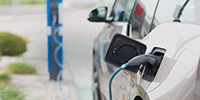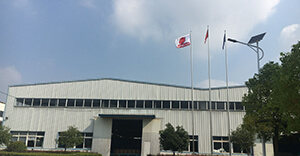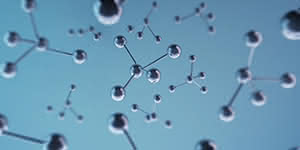What Batteries Are Made Of

Nearly all large rechargeable batteries in common use are Lead-Acid type. (There are some NiCads in use, but for most purposes the very high initial expense, and the high expense of disposal, does not justify them). A few Lithium-Ion types are starting to make their appearance, but are much more expensive than Lead-Acid and most charge controllers do not have the correct setpoints for proper charging.
The acid is typically 30% Sulfuric acid and 70% water at full charge. NiFe (Nickel-Iron) batteries are also available - these have a very long life, but rather poor efficiency (60-70%) and the voltages are different, making it more difficult to match up with standard 12v/24/48v systems and inverters. The biggest problem with NiFe batteries is that you may have to put in 100 watts to get 70 watts of charge - they are much less efficient than Lead-Acid. What you save on batteries you will have to make up for by buying a larger solar panel system. NiCads are also inefficient - typically around 65% - and very expensive. However, NiCads can be frozen without damage, so are sometimes used in areas where the temperatures may fall below -50 degrees F. Most AGM batteries will also survive freezing with no problems, even though the output when frozen will be little or nothing.
Industrial Deep Cycle Batteries
Sometimes called "fork lift", "traction" or "stationary" batteries, are used where power is needed over a longer period of time, and are designed to be "deep cycled", or discharged down as low as 20% of full charge (80% DOD, or Depth of Discharge). These are often called traction batteries because of their widespread use in forklifts, golf carts, and floor sweepers (from which we get the "GC" and "FS" series of battery sizes). Deep cycle batteries have much thicker plates than automotive batteries. They are sometimes used in larger PV systems because you can get a lot of storage in a single (very large and heavy) battery.
Plate Thickness
Plate thickness (of the Positive plate) matters because of a factor called "positive grid corrosion". This ranks among the top 3 reasons for battery failure. The positive (+) plate is what gets eaten away gradually over time, so eventually there is nothing left - it all falls to the bottom as sediment. Thicker plates are directly related to longer life, so other things being equal, the battery with the thickest plates will last the longest. The negative plate in batteries expands somewhat during discharge, which is why nearly all batteries have separators, such as glass mat or paper, that can be compressed.
Most industrial (fork lift) deep-cycle batteries use Lead-Antimony plates rather than the Lead-Calcium used in AGM or gelled deep-cycle batteries and in automotive starting batteries. The Antimony increases plate life and strength, but increases gassing and water loss. This is why most industrial batteries have to be checked often for water level if you do not have Hydrocaps. The self discharge of batteries with Lead-Antimony plates can be high - as much as 1% per day on an older battery. A new AGM typically self-discharges at about 1-2% per month, while an old one may be as much as 2% per week.













